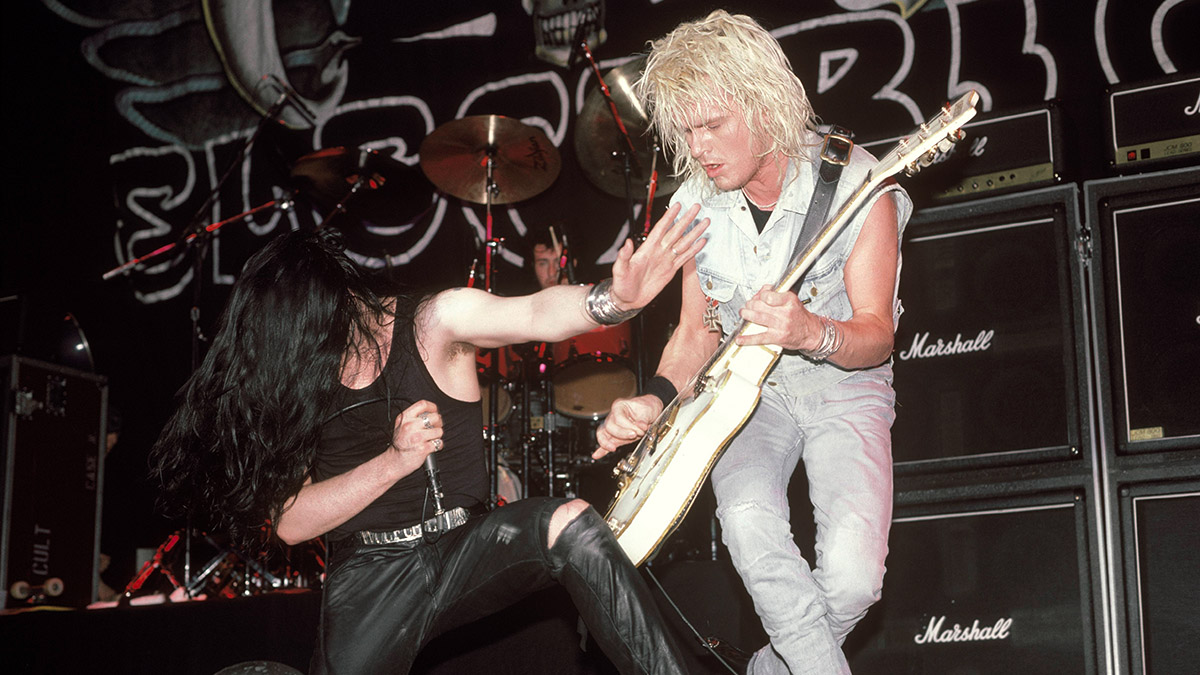5 ways to use Mixolydian scale – the Goldilocks mode loved by the Cult, AC/DC and Eric Johnson
Everything from feelgood rock to funk gets better with Mixolydian, a mode used to great effect by everyone from Guns N' Roses to Kool and the Gang

If you’ve ever found the major scale annoyingly happy but the minor scale too moody, do we ever have something for you.
Mixolydian is a sound you already know: the intro and verses of Sweet Child O’ Mine, the outro of Hey Jude, and the main sections of Coldplay’s Clocks all use it. It’s got more attitude than the major scale but it’s less dark than the minor, in the Goldilocks zone for countless memorable songs without too much schmaltz.
Technically, the Mixolydian scale is the same as the major scale, but the 7th note is lowered by one semitone (one fret). Two great songs for demonstrating the Mixolydian sound are Kool and the Gang’s Celebration, whose horn riff starts on that minor 7th and works down to the root, and The Cult’s She Sells Sanctuary, which has a constant drone of the root notes so you can hear how the other notes harmonise against it.
The most important notes are the major 3rd and minor 7th. It’s that unusual combination which makes the Mixolydian sound so distinctive. Those notes also appear in dominant 7th chords (E7, G7 etc), so Mixolydian works perfectly over them.
In blues-derived music, it’s common to play the minor 3rd against major chords, often pulling it slightly sharp with a blues curl. AC/DC often play Mixolydian chord progressions with pentatonic melodies, blurring the lines between major and minor even further.
Our examples demonstrate the ‘pure’ sound of Mixolydian by using only major 3rds throughout, but you can get a raunchier sound by experimenting with minor 3rds. Example 5 uses the dominant pentatonic, which is like the minor pentatonic but with the minor 3rd raised one fret to a major 3rd.
Example 1. Get to know the sound
For this example, we’re playing the D Mixolydian mode over a constant open D root note. This will familiarise your ear with the tonality. The riff in The Cult’s She Sells Sanctuary is based entirely on this idea.
All the latest guitar news, interviews, lessons, reviews, deals and more, direct to your inbox!
Example 2. Play two major chords two frets apart
Here’s a simple chord sequence (D-C) that brings out the sound of D Mixolydian. You can play it as chords or, as we’ve done here, an arpeggio lick. You can also use this whole lick over a steady D major chord to emphasise the mode.
Example 3. Write upbeat rock riffs
Almost every AC/DC hit uses Mixolydian chords, and you’ll find this mode wherever a band wants to write feelgood songs that still rock, whether it’s Lynyrd Skynyrd, Def Leppard or Green Day. Use your thumb for the 2nd fret E-string in bar 2.
Example 4. Play single-note funk riffs
Mixolydian is probably the most common mode in funk and disco music, so tons of classic funk riffs are based on it. Use a compressor pedal here if you have one, and focus on getting the staccato notes to bounce.
Example 5. Use the dominant pentatonic
It’s like the minor pentatonic, but every time you would play a minor 3rd, shift it up one fret. Eric Johnson and Joe Bonamassa love this sound. You can easily combine it with the minor pentatonic too for a southern rock vibe, too.
Jenna writes for Total Guitar and Guitar World, and is the former classic rock columnist for Guitar Techniques. She studied with Guthrie Govan at BIMM, and has taught guitar for 15 years. She's toured in 10 countries and played on a Top 10 album (in Sweden).






